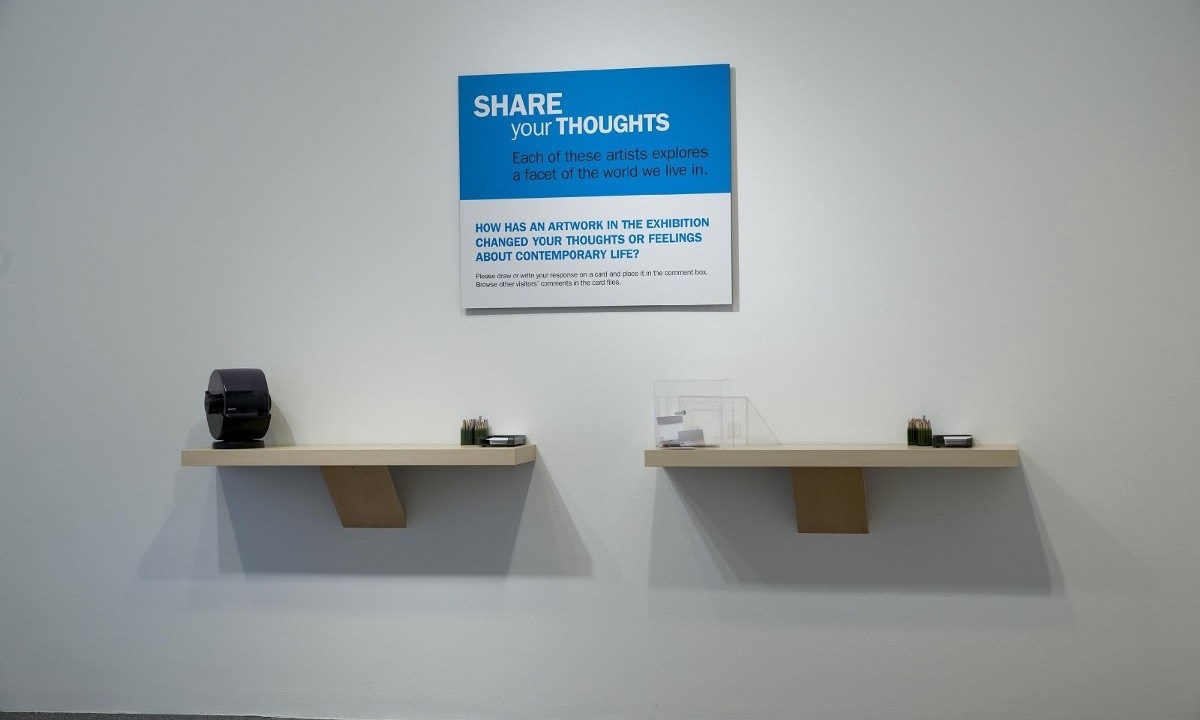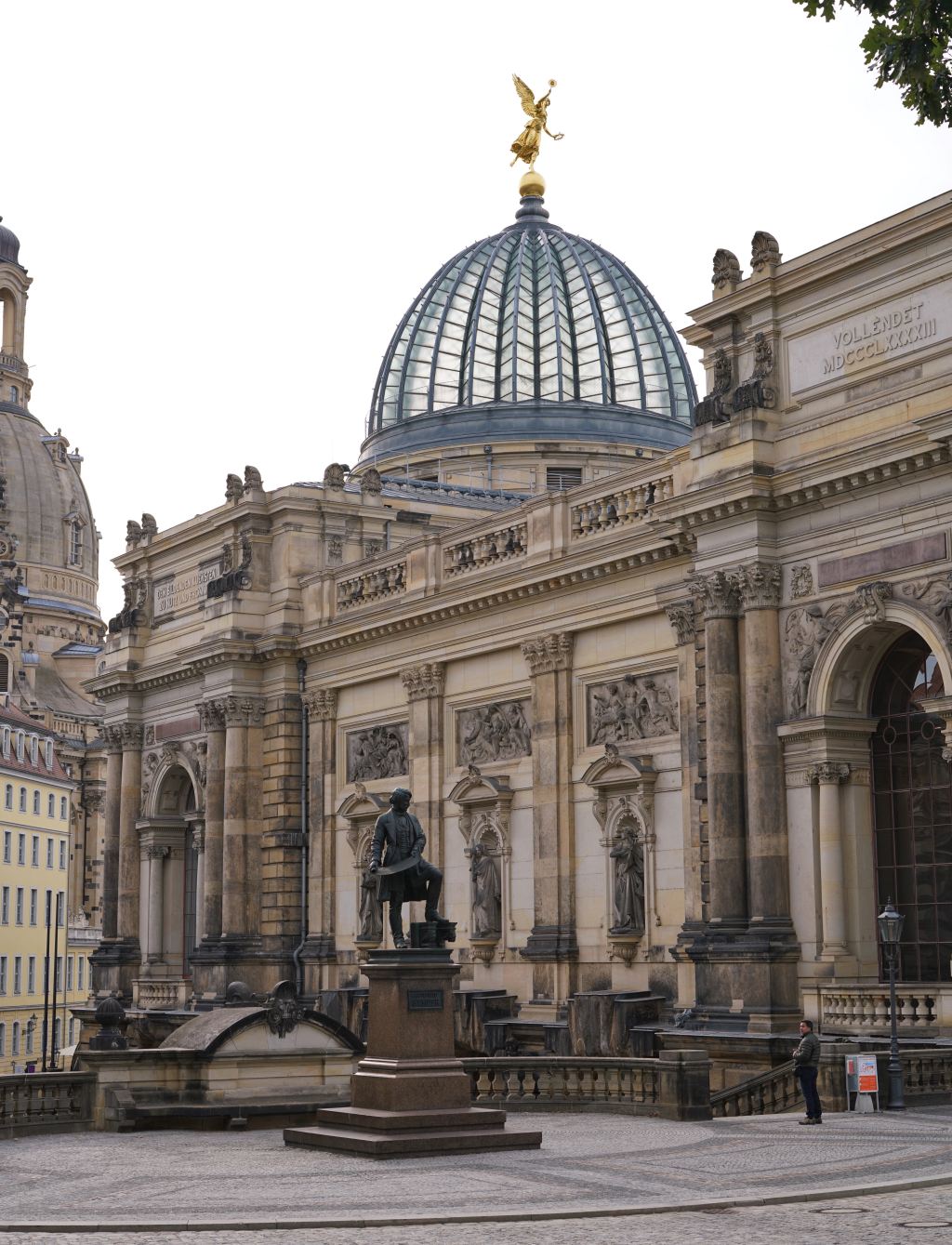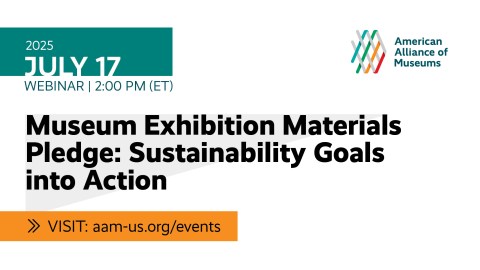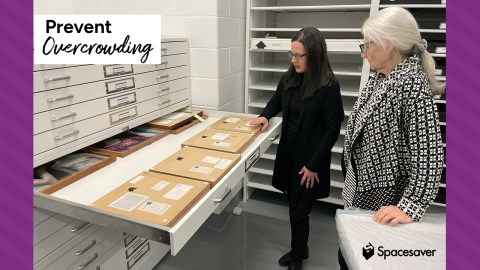
In this series of posts, EdCom’s Trends Committee is taking a deeper look at emerging phenomena identified in the 2019 edition of TrendsWatch from the Center for the Future of Museums. Previously in the series, they explored how the push for decolonization is making a concrete impact at two particular museums. In this post, they turn their attention to the all-important topic of “Truth, Trust, and Fake News,” with case studies from the Baltimore Museum of Art in the United States and the Albertinum Museum in Germany.
Many of you reading this may have come through your self-curated social media streams. Chances are those social media feeds reflect you. They reflect you by your choice of who to follow, who follows you, the posts you do and don’t engage with, and who you feel is an authority on matters you deem important. This leaves little room for others whose opinions and interests don’t align with your own, and you may outright ignore any information that challenges your worldview. That is how social media is meant to work. You are the editorial authority and the intended audience for the interpretation. This type of democratization of authority, while wonderful in spirit, can make it difficult to agree upon who to trust and to reach a consensus on truth. These difficulties aside, social media as a primary source for news is on the rise, as found in a 2018 report by Pew Research Center. Our individual role in shaping content authority is only just beginning.
This trend has implications for museums, too. They have long been trusted institutions, and today are viewed as more trustworthy than news outlets and the federal government, as a 2017 study found. But in order to keep pace with the changing times, museums must be more than just trusted sources of information. Museums need to be a place where visitors can grapple with the truth and receive guidance in addressing misconceptions. There is an opportunity to foster critical thinking with visitors, as suggested in the TrendsWatch chapter on the issue, and marry the perspectives of audiences to the content authority and interpretations that have led to museums being trusted sources of information. Taking this further, museums can build upon their trust from the public by being transparent in how content and exhibitions are chosen, sharing how perspectives are researched and presented, and using visitors’ voices to shape the direction of the museum. This would go beyond how we currently talk about audience involvement, with an emphasis on assessing and discussing truth in collaboration on the museum content.
If museums are to embrace this reframed democratization of authority and invite their visitors to share, be challenged, and grow along with them, they need to be transparent, to successfully handle the ambiguity of such rich learning experiences. Transparency is becoming more prevalent in conversation around education within a museum setting. Read on to find out what two museums, the Baltimore Museum of Art and the Albertinum Museum, are doing to support this value.
Case Study: The Baltimore Museum of Art

The Baltimore Museum of Art (BMA) has begun to engage patrons in critical thinking about their personal response to the art on display. As Jessica Keyes, former Manager of Interpretation at BMA, wrote in a blog post, the museum uses “an interpretive planning process for each exhibition that begins with setting two to three visitor outcomes in collaboration with the curator.”
For its 2016 exhibition featuring the winners of the Baker Artist Awards, the museum invited visitors to share their responses to the works, some of which tackled contemporary issues like race, on note cards. The cards were then curated by BMA staff before being put on public display in a Rolodex. This self-regulated critical thinking exercise did not come without some controversy, as Keyes says the museum anticipated in creating “an open forum that would give equal weight to both celebratory and critical comments.” The feature garnered 139 responses, though 124 or 89 percent were off-topic statements like “Hi Mom” and “#squad.” The BMA staff cited this as a challenge, because they needed to allot additional time to go through the cards and take down the ones that did not pertain to the topic or were derogatory.
Nevertheless, the outcome of this was a positive learning experience for the museum educators themselves. As Keyes states, “discomfort is a positive response to art and as educators, one of our roles is to help visitors understand that their response is normal and can lead to a deeper understanding of themselves and the world.” What the educators learned was that “our visitors will meet us with respect and honesty, most of the time.” The BMA allowed for transparency by letting visitors voice their own interpretation of the art on display.
Case Study: The Albertinum Museum

The Albertinum Museum in Dresden, Germany, displays art from the Romantic period of the 1800s to the present day and boasts one of the largest art collections in Germany, with Hilke Wagner at its helm as the director. According to an article in The Guardian, “Wagner set out to energize Dresden’s contemporary art scene and to insist on the pluralist learnings of the Albertinum’s collections” when she came on as the director in 2014, and “implemented a roster of dialogue events and strategies across the Albertinum.” But she experienced pushback from the far-right ideology that had gripped this part of Germany through the Alternative for Germany (AfD) and Pegida movements.
The AfD “railed against any multicultural programming in favour of a ‘predominant German culture’” and wanted to preserve the “classical German art.” The complaints didn’t just stop at the museum’s collection and programs, but became a personal attack on Wagner, and “It was so much hate and aggression at once,” she says, that “for two weeks, I barely left the house. I became really paranoid.” Then, Wagner did something unexpected: she picked up the telephone and called one of her attackers, going on to call every single person who had targeted her. Wagner explains that she realized, “Pegida and AfD voters are everywhere here. They’re among families, colleagues and our network of sponsors. Where are we if we simply say we’re not talking to one another?”
These conversations proved instrumental in creating and implementing a plan that began with an “open-invitation discussion series.” Through these discussions, it became apparent that the public wanted imagery and paintings from the era when Dresden was split into East and West, specifically “depicting the wartime destruction of Dresden.” The museum agreed to show more of these works, but in a way that defied some of the politicized narratives around them—by, for instance, juxtaposing them with contemporary anti-war artworks or highlighting women artists from the period. The interactive dialogue between Wagner and the public shows that museums “are one of the few places where such direct encounters can still happen.” The ongoing discussions have proved successful, and “Wagner hasn’t received any hate mail since January. The other day she bumped into one of her former critics in the street. ‘He said he owed me a nice letter.’
Museums have the potential, and some say the responsibility, to immerse their visitors in these dialogues. On the eve of the 2016 presidential election, Rebecca Herz wrote on her blog, Museum Questions, that museums must be willing to address misinterpretations while helping visitors along in the process of questioning their knowledge. If done well, this experience would lead visitors to develop stronger critical thinking skills. However, doing so at a museum requires visitors to feel welcome and safe to share and grow, and museum professionals to embrace the discomfort of grappling with this work. In addition, this requires museums to be open to listening when visitors raise concerns over content and interpretation, as was recently experienced by the National Archives Museum (NAM).
In promotion of its latest exhibition Rightfully Hers: American Women and the Vote, the NAM used a photo from the 2017 Women’s March in Washington DC with words from protest signs intentionally obscured. The doctoring on the photo was immediately noticed, and was met with disdain and outrage directed at the museum. The intention of obscuring language in the photo was to appear non-partisan and sensitive to others who may complain about the use of language involving female anatomy. The NAM leadership worked immediately to rectify the situation by removing the photo and replacing it with an undoctored version, then issued apologies to staff, the public, and the museum professional community accepting full responsibility for their mistake.
In altering parts of the photograph, the museum sacrificed telling the truth of the motivation behind the Women’s March to avoid conflict, which was ironically another example of the experience of women being silenced, the topic the exhibition explores. As a result, the reputation of the museum was called into question. The National Archives and Records Administration is charged to preserve all historical documentation, and this situation with its museum has reduced faith in its ability to present objective truth in history.
The history of this country is messy, and the truths within are uncomfortable to address. However, it is not in our collective best interest to shy away from this work. Museums can be the convener of communities to learn from these truths, have open discourse about their meaning for us today, and critically think about ways to improve together. NAM, in recognizing its misstep and quickly working to fix and publicly acknowledge it, has shone a light on the responsibilities of museums in communicating truth. While this work is hard, Keyes sums up a key benefit through the work done at the BMA: ”The most positive outcome from this visitor response is that we have learned that we can address challenging issues head-on and that our visitors will meet us with respect and honesty…Each successful program gives us the confidence to experiment more broadly the next time.” The result will be a stronger relationship between museums and their visitors built on trust.
Museums participating in this practice will help fulfill their role in society by helping visitors sharpen tools necessary to comprehend our information-driven society. This is of pressing importance in this moment, with weaponized information on the rise on social media. In just one of countless articles published on the subject, reporter McKay Coppins reflects in the March issue of The Atlantic on the tactics used by the Trump 2016 presidential campaign, while preparing us for what is to come from right-wing and left-wing sources during the 2020 race. A voting population equipped with strong critical thinking skills will have a stronger grasp of the truth coming into a pivotal election cycle.
In reflecting on the BMA and Albertinum’s thought-provoking ventures into more transparent discussion with visitors, and the fallout of the situation at the NAM, it is clear that feedback is crucial for museums to understand how to best support their visitors’ development of critical thinking. Beginning a discussion and inviting visitors to engage, offer their perspectives, and work towards a consensus, museum professionals have an opportunity to share and direct the conversation while gaining perspectives from the visitor. Today, society has more channels of information, and visitors’ skill sets need to evolve to confidently question information presented and work to divine the truth and its meaning to their lives. As trusted institutions, museums have a responsibility to help people meet this changing need.








Great post. Thanks for sharing this